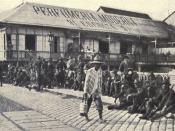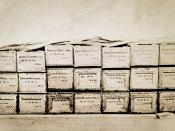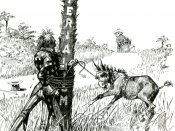Participation during the Spanish-American War took different forms, both on the home front and on the battlefield. For the first time in American history, the effort of the war involved naval campaigns in two oceans and the landing of troops overseas. To accomplish this required participation by members of various social and ethnic groups, of both sexes and a range of ages. Out of the approximately 20,000 U.S. troops that participated actively in the Cuban campaign, the majority was regular soldiers, and 7,000 were African Americans. The average volunteer was twenty-four years old, single, and native born, and employed as a worker or farmer. Most of the 200,000 volunteers recruited in the United States at the time of the war stayed at home in military camps; only a third of them saw action in Cuba, the Philippines, and Puerto Rico . The media portrayal of this participation emphasized themes, scenes, and motives that aroused nationalism, idealized feelings among the public even in isolated towns and rural areas.
Photographs, stereoscopic views, lanternslides, lithographs, drawings, and paintings expressed positive and heroic images that did not necessarily reflect the realities of the war. Images were also affected by changing perspectives, as in the case of the portrayal of Cuban separatist fighters by media in the United States.
The Treaty of Paris formally ended the war between the United States and Spain and arranged for the purchase of the Philippines by the United States for $20 million . The Filipino leader Emilio Aguinaldo and his nationalist movement expected that the United States would recognize their self-proclaimed republican government. But President William McKinley decided instead for a policy termed "benevolent assimilation." The status of the Philippines was later formalized as a territory under U.S. rule.
By August 1898, approximately 10,000 U.S. troops had landed in...


